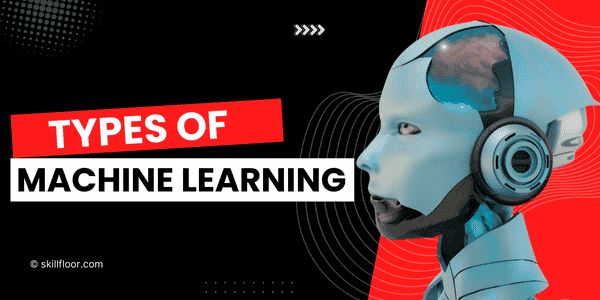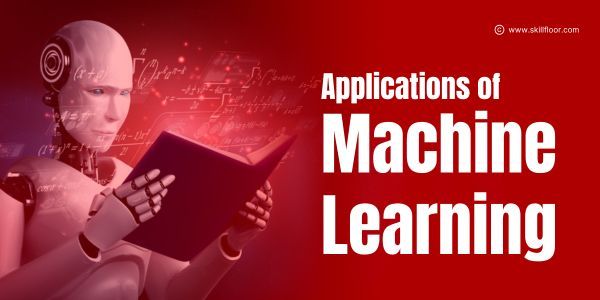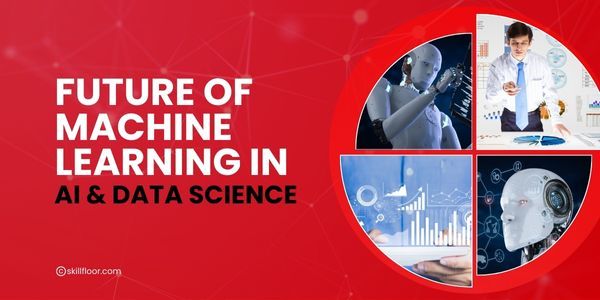Types of Machine Learning
The types of machine learning are supervised, unsupervised, and reinforcement learning. Understand their applications, techniques, and impact across industries.

Machine Learning (ML) has always fascinated me. It’s incredible to think about how machines can be programmed to "learn" and improve over time without explicit instructions. But when I first started diving into the field, I quickly realized that understanding the types of machine learning was one of the most fundamental steps in grasping the broader picture of how this technology works. Let me share what I’ve learned in a way that’s simple, structured, and, most importantly, easy to follow.
Machine Learning is Everywhere
You’ve probably used machine learning today without even knowing it. Maybe you asked a virtual assistant like Siri a question or watched Netflix or YouTube, where the recommendations felt spot-on. These helpful features are made possible by machine learning, working quietly behind the scenes.
When I first started learning about machine learning, I realized that it’s not enough to just use these tools. I wanted to understand how they work. That’s when I discovered something interesting—not all machine learning works the same way. There are different types, and each type is designed to solve a specific kind of problem. Learning about these types felt like unlocking a secret about how machines learn and make decisions.
It’s Not a One-Size-Fits-All Approach
One thing that initially confused me about machine learning was that it didn’t follow a universal formula. The process of teaching a machine to identify spam emails, for example, is completely different from programming an AI to play chess. Why? Because the type of learning required varies depending on the task.
This is where most beginners, including me, hit a roadblock. It’s not just about teaching machines to learn—it’s about choosing the right way to learn. And trust me, there’s no magic wand here. That’s why I decided to dig deeper into the three main types of machine learning: supervised, unsupervised, and reinforcement learning.
What are the main types of machine learning, and how do they work?
The Three Pillars of Machine Learning
1. Supervised Learning: The Teacher-Student Model
If I had to describe supervised learning, I’d call it the "teacher-student" model. Imagine sitting in a classroom where your teacher shows you examples and tells you the answers. Over time, you learn to recognize patterns and solve similar problems on your own.
How It Works
In supervised learning, the algorithm is trained on labeled data. Each data point comes with an input and a corresponding output. For example:
-
Input: A photo of an animal.
-
Output: The label “cat” or “dog.”
The algorithm’s job is to learn the relationship between the input and output. Once trained, it can predict the output for new inputs.
Examples of Supervised Learning Algorithms
-
Linear Regression: Predicting continuous values like house prices.
-
Logistic Regression: Classifying data like spam vs. non-spam.
-
Decision Trees and Random Forests: Handling more complex classification problems.
Real-Life Applications
One of my favorite examples is email spam filtering. The system is trained on a dataset where emails are labeled as "spam" or "not spam." Over time, it becomes good at predicting which incoming emails are spam, even for emails it hasn’t seen before.

2. Unsupervised Learning: The Detective of Patterns
Unlike supervised learning, unsupervised learning doesn’t have a teacher. I like to think of it as a detective who’s dropped into an unfamiliar city and tasked with finding patterns or making sense of the environment.
How It Works
In unsupervised learning, the data is unlabeled. The algorithm explores the data to find hidden structures, groupings, or relationships. It doesn’t have a predefined output to learn from—it’s essentially on its own.
Examples of Unsupervised Learning Algorithms:
-
Clustering (e.g., K-Means): Grouping similar data points.
-
Principal Component Analysis (PCA): Reducing the complexity of data while preserving its core features.
Real-Life Applications
One fascinating application is customer segmentation in marketing. Businesses use unsupervised learning to group customers based on their purchasing behavior. This allows them to target each group with tailored promotions.
3. Reinforcement Learning: The Trial-and-Error Game
Reinforcement learning (RL) feels like training a pet. You give it a task, reward it when it performs well, and guide it away from mistakes. Over time, it learns to make better decisions on its own.
How It Works
Reinforcement learning involves an agent (the learner) interacting with an environment. The agent takes action, receives feedback in the form of rewards or penalties, and adjusts its behavior to maximize the total reward over time.
Examples of Reinforcement Learning Algorithms:
-
Q-Learning: A simple method to teach agents to make decisions.
-
Deep Q-Networks: Used for more complex tasks like playing video games.
Real-Life Applications
Think of self-driving cars. The car (agent) navigates the road (environment) by learning which actions—like turning or accelerating—result in safe and efficient driving (rewards).
Beyond the Basics: New and Combined Methods
While these three types form the core, I’ve come across some interesting hybrids and emerging categories:
Semi-Supervised Learning
This is like getting partial guidance. It uses a small amount of labeled data alongside a large amount of unlabeled data to train models. It’s especially useful when labeling data is expensive or time-consuming, like in medical imaging.
Self-Supervised Learning
This cutting-edge approach teaches models to learn representations from unlabeled data. It’s the secret sauce behind AI systems like GPT (Generative Pre-trained Transformer) that power conversational AI.

Comparing the Types of Machine Learning
At this point, you might be wondering how these types stack up against each other. Here’s a quick comparison:
|
Type |
Data Requirements |
Goal |
Examples |
|
Supervised Learning |
Labeled data |
Predict outcomes from inputs |
Spam filtering, image recognition |
|
Unsupervised Learning |
Unlabeled data |
Find patterns or structures |
Market segmentation, anomaly detection |
|
Reinforcement Learning |
Interactive feedback |
Maximize cumulative reward |
Game AI, robotics, self-driving cars |
Applications Across Industries
Machine learning is more than just a theoretical concept—it’s reshaping industries around the world. Here are a few examples that I found particularly exciting:
Healthcare
-
Supervised Learning: Predicting diseases based on patient history.
-
Unsupervised Learning: Identifying patterns in genetic data.
-
Reinforcement Learning: Optimizing treatment plans.
Finance
-
Supervised Learning: Credit scoring and fraud detection.
-
Unsupervised Learning: Analyzing spending behavior for personalized recommendations.
Gaming
-
Reinforcement Learning: Training agents to master games like chess or Go.
Challenges and Limitations
No type of machine learning is perfect. Each comes with its own set of challenges:
-
Supervised Learning: Requires a large, high-quality labeled dataset, which isn’t always available.
-
Unsupervised Learning: Results can be hard to interpret, and there’s no guarantee the patterns found are meaningful.
-
Reinforcement Learning: Often computationally expensive and may require long training periods.
Looking back, understanding the types of machine learning was a game-changer for me. It provided a clear framework for approaching different problems and deciding which type of learning to use. Whether it’s teaching a model to classify images, detect fraud, or master a game, choosing the right type of ML is crucial.
If you’re just starting, my advice is to experiment with these types hands-on. Use simple datasets, play with algorithms, and see how they behave. Trust me, it’s the best way to learn!
Machine learning is a journey, and understanding its types is just the beginning. But once you grasp these concepts, the possibilities feel endless.
Further Reading and Resources
If you’re ready to dive deeper, here are some excellent resources:
-
Books: "Hands-On Machine Learning with Scikit-Learn, Keras, and TensorFlow" by Aurélien Géron.
-
Skillfloor: Explore Skillfloor for practical, hands-on learning resources to build your machine learning skills.
-
Libraries: Practice using Python libraries like Scikit-learn, TensorFlow, and PyTorch.






























































